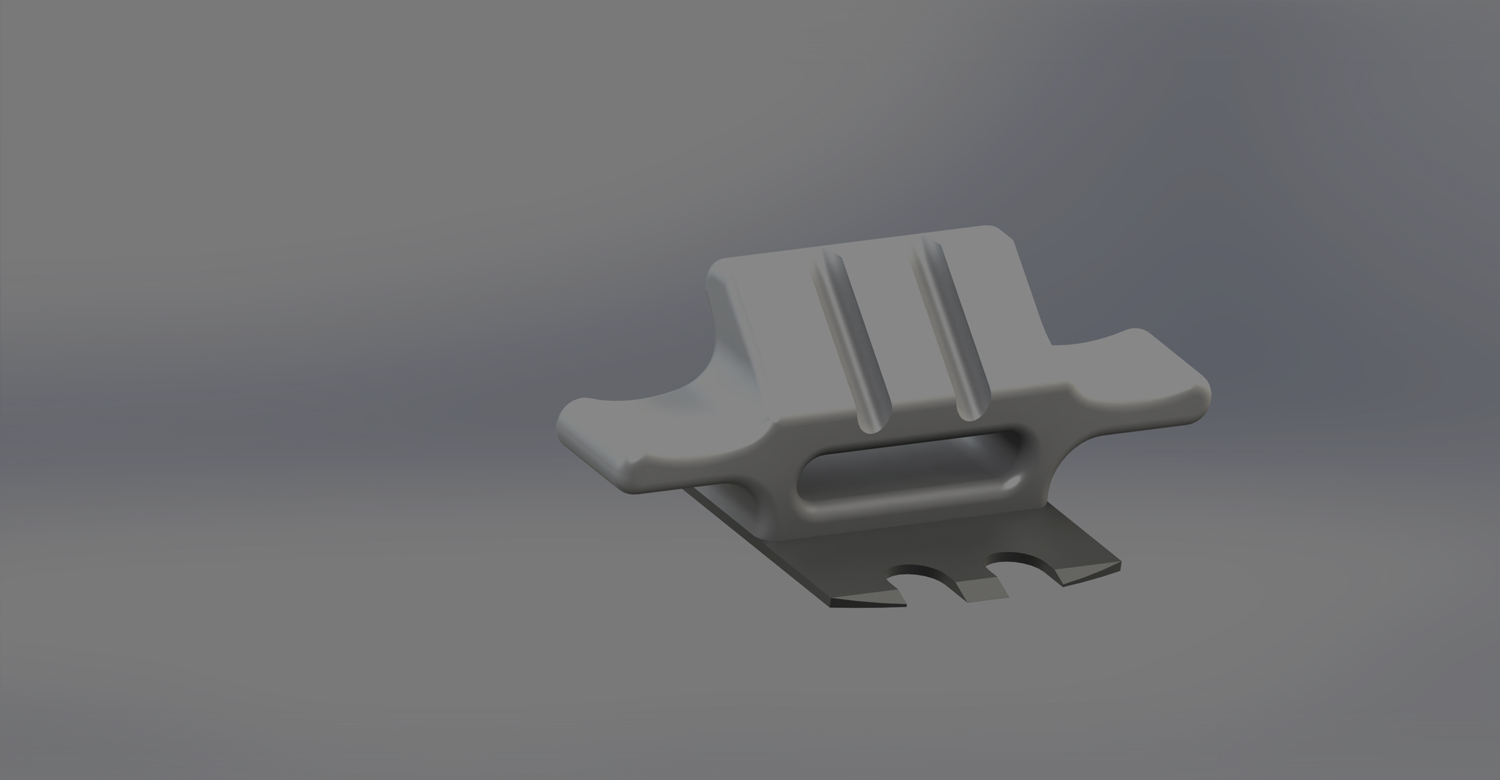
Surgical Tool for Cranial Drill Alignment in Rodents
Patent Pending #62369132
This enables the surgeon to drill a hole that travels longitudinally along the lateral bone structures, thereby increasing surface area for a bone screw to purchase to the skull. Often, these bone screws are used along with some type of epoxy or cement to attach larger implantable devices. This method of bone screw placement improves on many other methods that only drill into the cranial plates which are very thin and preclude proper threading and purchase of a screw. Developing the surgical skills to properly traverse the cranial ridge may take a surgeon a very long time and failures in placement can result in brain damage or improper purchase of the bone screw/s, leading to an eventual failure of the implant, often resulting in the premature sacrificing of the animal. Therefore, proper bone screw placement is both a technical challenge, and furthermore, a concern for animal well-being.

Other methods for placing bone screws along the cranial ridge involve stereotactic tools that are cumbersome and time consuming to employ. Minimizing surgical complexity and the time an animal spends anesthetized are crucial factors that contribute to operational success and animal recovery. This surgical tool has been designed to quickly align to anatomical features of the rodent cranium and guides a drill and bit at the proper angle into the cranial ridge bone. The dimensions of the tool are such that a surgeon may place multiple screws on each side of the skull, following the cranial ridge (circled) from the anterior/frontal aspect (F), to the posterior/parietal aspect (P). The cranial ridge described is conserved in several rodent species and is thick enough, in the described areas, to drill holes that do not enter the brain cavity on the medial aspect, or protrude out of the skull on the lateral aspect. The “angle of attack” for the drill bit has been determined through consultation of anatomical drawings as well as trial in the operating room with anesthetized animals.

Recent Comments
Archives
- April 2023
- January 2023
- November 2022
- May 2022
- March 2022
- January 2022
- December 2021
- April 2021
- December 2020
- October 2020
- August 2020
- July 2020
- March 2020
- February 2020
- January 2020
- December 2019
- November 2019
- October 2019
- January 2019
- December 2018
- November 2018
- August 2018
- July 2018
- April 2018
- March 2018
- November 2017
- October 2017
- February 2017
- October 2016
- August 2016
- July 2016
- November 2015
- October 2013
- February 2013
- January 2013
- August 2012
- July 2012
- June 2012
- May 2012
- April 2012
- February 2012
- December 2011
